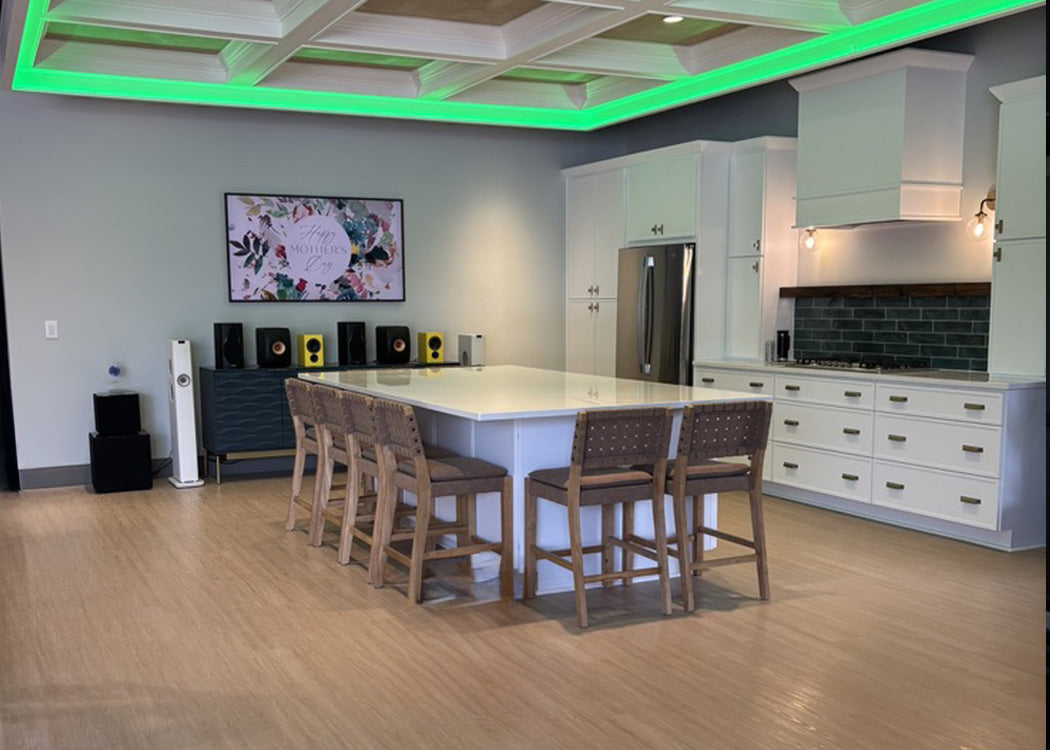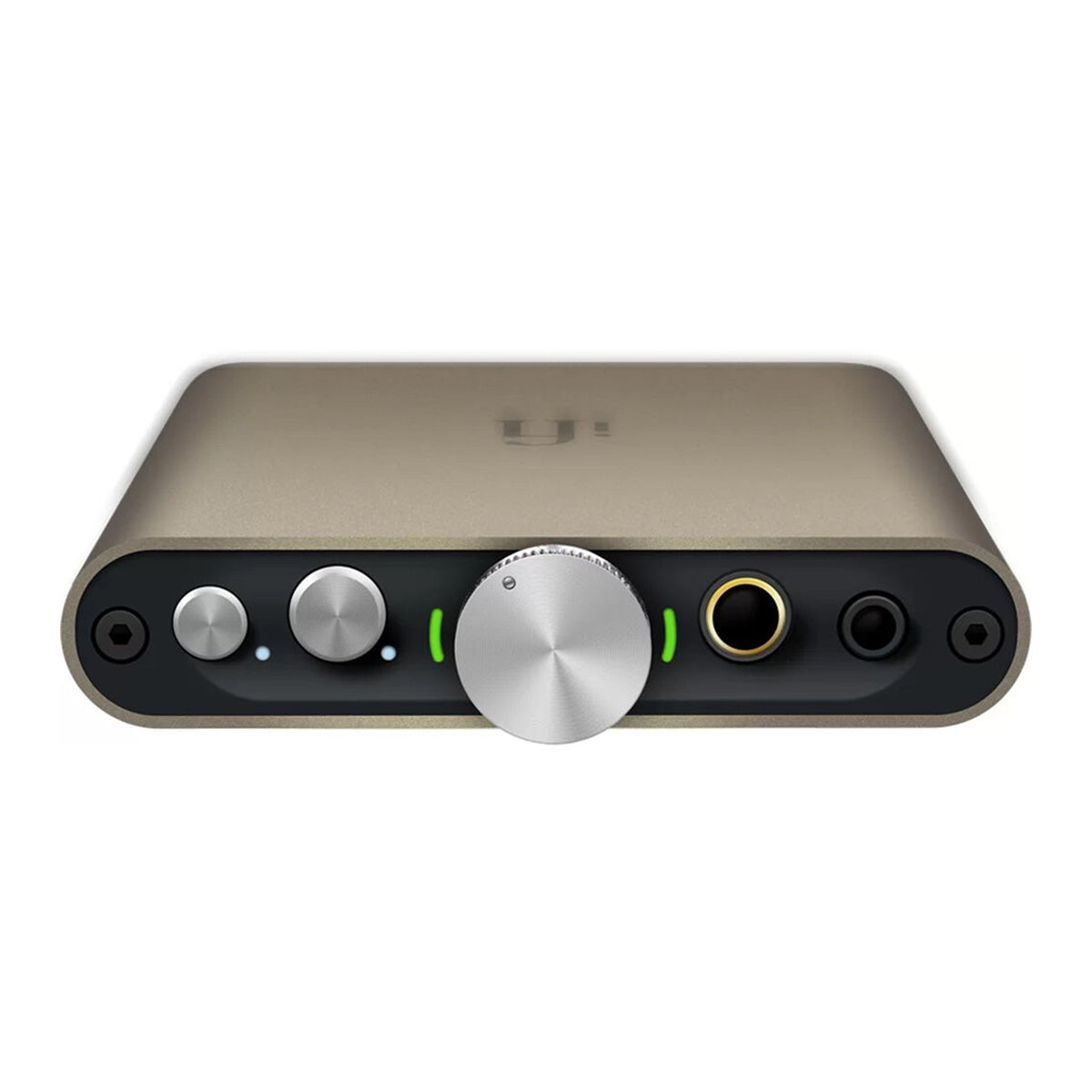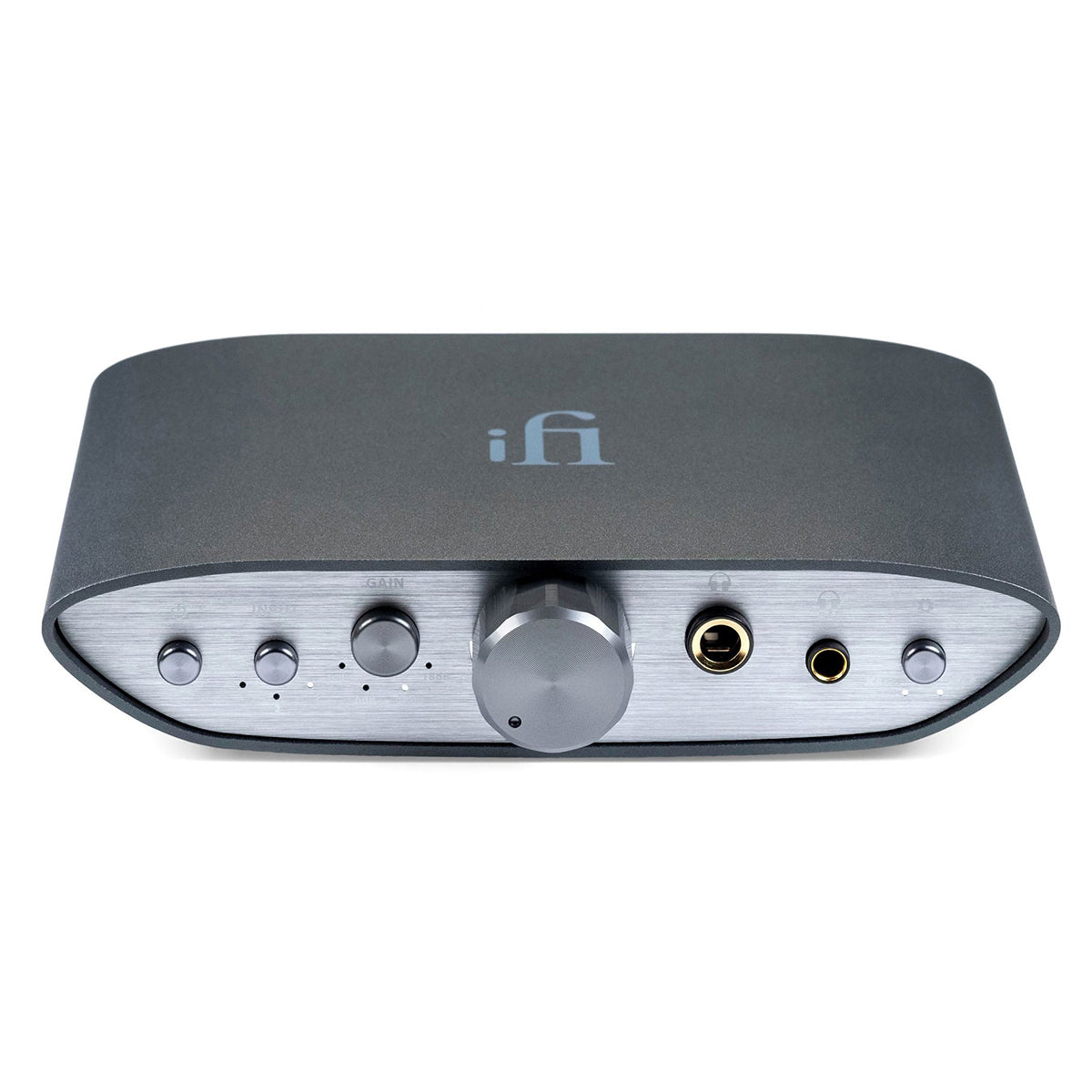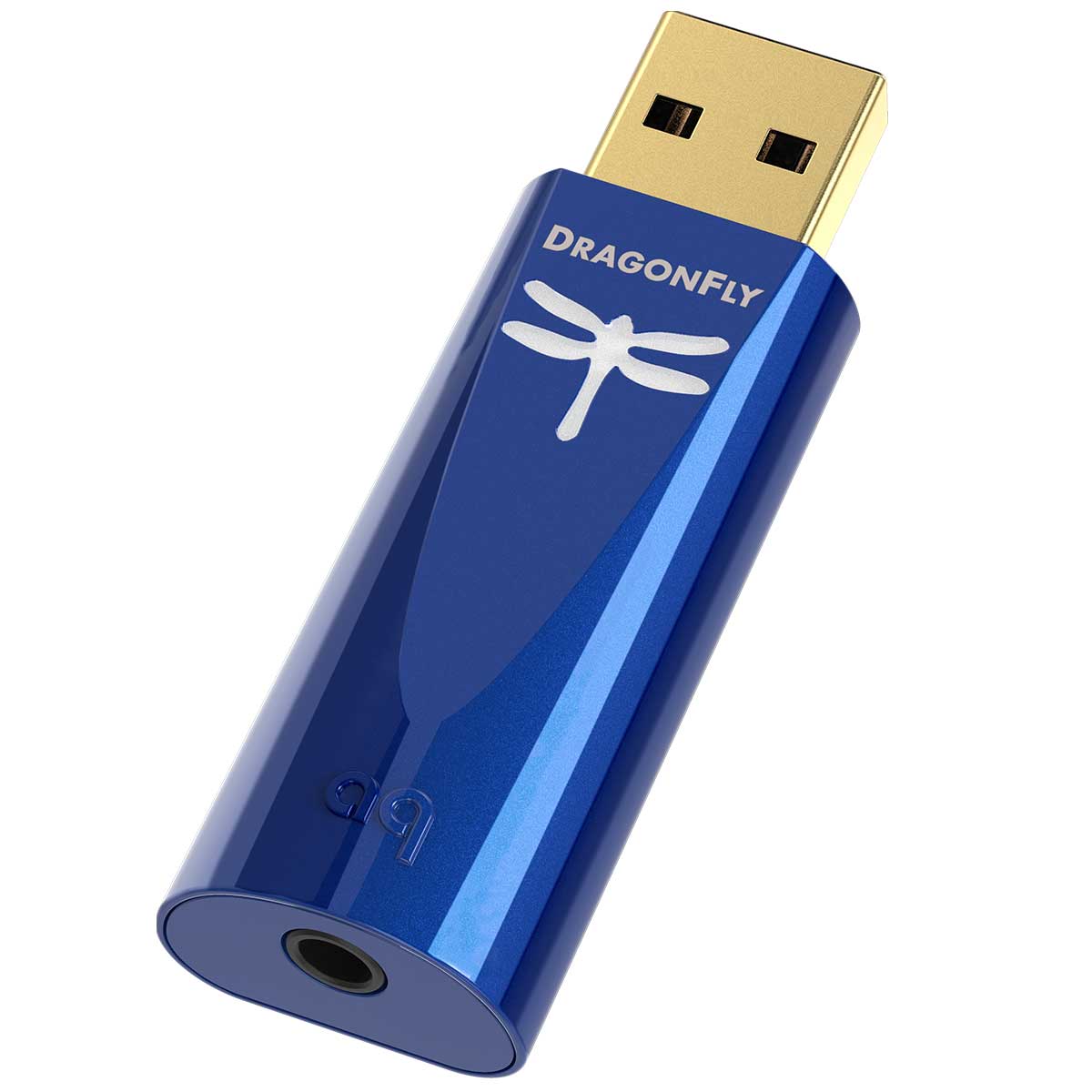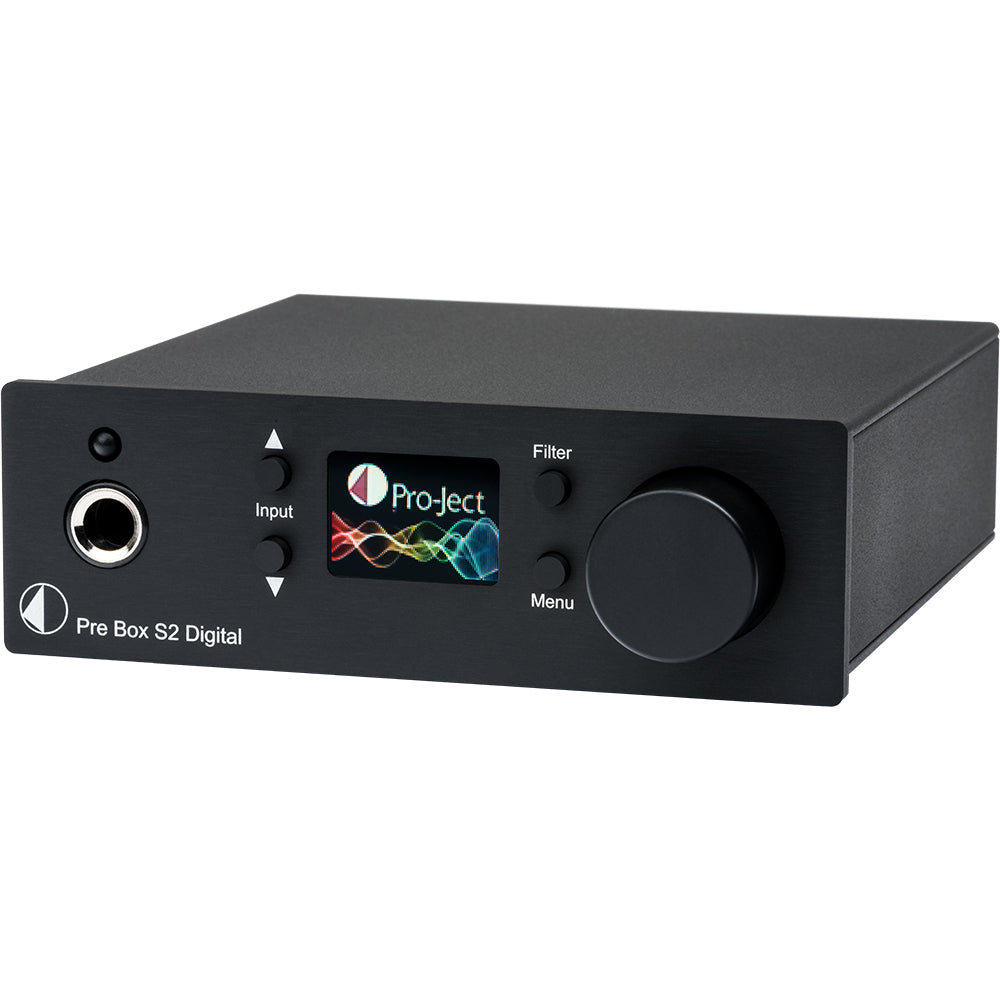The Best Headphone Amps Under $500

Before we get to our Best Headphone Amps Under $500 list, it's important to understand what a headphone amp is and why you need one. Below is a short recap of our full article, which you can find here.
If you are in the market for a headphone amp, you likely have one of several reasons for shopping around. Perhaps your headphones need some extra power to get going. Maybe your audio gear does not have a headphone jack or has a weak headphone amp. It could be you want to use your headphones in another room. Or you might be after an improvement in the overall sound your headphones provide.
Most headphone amps will solve any of these issues and the majority of them today come with an upgraded DAC as well. Headphone jacks are an afterthought on our smartphones and most audio gear. When you under power your headphones the bass does not have the impact it could give you and the sound can just be anemic. Most good headphone amps will have 10 times the power of the standard smartphone or laptop headphone amp to give you better bass and more dynamic sound. When you couple the dedicated headphone amplifier with a good DAC you will hear a substantial improvement in sound quality. Many of these headphone amps with DAC’s also have the capability of connecting up to your audio system to improve your main speakers as well for an added bonus.
If you have high impedance headphones, you have likely found out, the headphone jack on your phone will just not play them loud enough. A portable headphone amp may be just the ticket for your system. All of our choices on this list have the ability to drive just about any pair of headphones on the market. We also picked units that can serve that great multi-purpose of a headphone amp along with improving your home audio system. Since most of us listen to headphones on the go, we leaned toward portability for most of our choices.
iFi Audio hip-dac 2
Our first headphone amp under $500 is portable but still makes room for beefier components. When you first look at the hip-dac2, it looks like a tiny flask that could hold your favorite bourbon. But, this portable and ultra-affordable DAC/headphone amp is perfectly-sized for a run, a flight, or just getting some work done at a coffee shop. It connects via USB – just add hi-res music from your smartphone, tablet, PC, or Mac, insert headphones, and away you go.
Inside, there is an upgraded 16-core XMOS chip that processes digital audio from the latest SuperSpeed USB 3.0 input with lower latency.
If you're into Tidal, you'll appreciate having a full MQA decoder (rather than a Renderer only) that completes all three unfolds to deliver the studio-quality sound of the original master recording.
We also like how iFi chose a male connector for the Type-A USB port. This provides much better mechanical integrity than the micro USB ports used in some portable DAC/headphone amps, especially when it's being carried around inside of a pocket. The other USB-C port is dedicated to charging the unit and this is fantastic since most chargers have already moved on to the USB-C standard.
For the analog stage, iFi uses a balanced design which is quite rare and not found in most products at this price point. Balanced means less noise interference and crosstalk. Rather than using a single-ended design, this uses a type of audio circuitry that has individual left & right channels. It's superior to the single-ended circuits commonly found in less expensive headphone amps at this price point. In terms of sound quality & price, this makes hip-dac2 pretty special for a portable headphone amp under $200.
The amplifier section even features a custom iFi OV op-amp with the power to drive some of the most power-hungry headphones and high-sensitivity in-ear monitors on the market. You could even drive high-impedance open-back headphones up to 600 ohms without breaking a sweat if you use the balanced 4.4mm headphone output next to the hip-dac's beefy high-quality volume knob.
There's also a 3.5mm stereo miniplug output for use with single-ended headphone connections and this uses iFi's proprietary "S-Balanced" circuitry to reduce crosstalk and other noise interference in the signal by half. Now, that's pretty hip! This will really come in handy if you like listening to high-sensitivity in-ear headphones.
For the digital section, iFi selected a similar high-performance Burr-Brown DAC they use across their line of more expensive headphone amps. The chipset has a natural, musical sound, and iFi's deep experience with this digital tech means they know how to squeeze every last drop of performance from it. Hip-dac2 is ultra-portable, and we think this is the perfect little headphone amp for anyone with an on-the-go lifestyle for less than $200.
iFi Audio ZEN CAN
If one of your main reasons for considering a headphone amp is to have better audio quality at home, then you’ll want to pay special attention to the internal components of the headphone amp. Usually, the phrase “you get what you pay for” applies to headphone amps too. So, if you are doing the analog-only type, you may find some with premium components or pure Class A amps to drive your headphones. And that's exactly what you'll find in this next headphone amp.
ZEN CAN uses fully-discrete and balanced Class A amplifier circuitry throughout its design, which trickles down from iFi's most expensive flagship headphone amp that sells for $100's more.
If you already have a good external DAC and a great pair of open-back headphones, you'll need a powerful amplifier to drive them. This compact and ultra-affordable headphone amp sits on a desk and connects with an external DAC or laptop's analog output to pump out an audio signal that is full of dynamic details – just add a good pair of high-impedance headphones or speakers, press play, and zen out.
If you plan to use your headphone amp with a power amp or pair of powered speakers, you will want to make sure it has a set of audio output jacks in addition to the headphone out. In some cases, the headphone out is capable of driving an amp or speakers. Most of the time, if you see the output rated at higher than 2 volts, it should work in a variety of situations.
The ZEN CAN has a whopping maximum output of 15.1v @600 Ohms on tap which is serious power that will make even difficult-to-drive high-impedance headphones like the Audeze LCD-3 open-back come alive. You can use the gold-plated balanced 4.4mm headphone output on the front panel for the cleanest signal possible. Or, for single-ended headphone connections, it's cool to see a 1/4-inch headphone jack on the front panel giving you both headphone options too.
On the other end, there are a host of high-quality balanced & single-ended connections for getting music into the ZEN CAN. Just use either the stereo-miniplug or the pair of RCA input sockets to connect a laptop, smartphone, or a DAC. There is also a balanced 4.4mm input on the rear for the cleanest signal from your audio sources to the headphone amp too.
Since the backs of open-back headphones are "open" to ventilate the soundwaves, so they don't get trapped and become standing back waves inside the earcup chamber, some of the lower frequencies are also leaked out instead of being redirected back to your ears — so the XBass circuited iFi designed actually corrects for this by adjusting for the lack of bass that’s often apparent with bass-shy headphones. Super cool!
AudioQuest DragonFly Cobalt
If you want even more dynamics & realism from your music, then audiophiles should absolutely consider stepping up to AudioQuest's flagship DAC/headphone amp. The tech inside Cobalt is simply amazing! Gordon & the AQ team crammed almost 200 components inside its tiny case.
While DragonFly Red is spectacular for its price point, Cobalt has several improvements. Cobalt has the same powerful headphone amp as the DragonFly Red — delivering plenty of power for even the hardest-to-drive headphones — but, stepping up to this gets you a higher performance ESS ES9038Q2M DAC chip with a minimum-phase slow roll-off filter for an even smoother, more natural, resolute sound.
The processor in the digital section is also improved. Not only is it 33% faster than the Red, it has also reduced the current draw from the USB connection. AudioQuest also studied the noise generated from WiFi, Bluetooth, and cell phones while sitting in close proximity to cell phones and laptops. They found if they reduced this noise, the audio improved, so they put more power supply filtering into the Cobalt to reduce all noise.
Rather than using multiple clocks, Cobalt uses Gordon Rankin’s special StreamLength® asynchronous-transfer USB code with monoClock® technology. This ultra-low-jitter clock is generated from the ESS ES9038Q2M DAC chip and runs the ESS chip functions as well as all microcontroller functions. While that is a mouthful of tech, what your ears will hear is a big improvement in both clarity and resolution of low-level audio information getting you more involved in the music.
In terms of audio file playback, Cobalt can handle up to 24-bit 96Khz files and for MQA lovers, it is a full render. Out of all the DragonFlys, Cobalt is the smallest “bug” that offers the most natural and immersive sound that is almost "holographic" in presentation. With its powerful headphone amp section and its upgraded digital section throughout, the difference you’ll hear will make you want to start playing all of your favorite songs just to hear them like it’s the very first time. For less than $400, the DragonFly Cobalt is a very special portable or at-home DAC/headphone amp.
Pro-Ject Pre Box S2 Digital
We have not heard a DAC/headphone amp with a stereo preamp built-in that sounds as good as this one for its price, period. The Pre Box S2 Digital is an ultra-compact component that can give your headphone setup a nice boost, and it won't take up much room on your desktop. You could even use its stereo RCA outputs as a preamp to feed pristine audio signals to a pair of powered desktop speakers or a power amp too, so it has ample power for most cans. The sleek aluminum chassis is barely over four inches wide — so it's compact enough to tote in a bag and carry around when you travel.
This one was built to deliver top-notch sound quality from digital sources, and its incredibly well-thought-out design and all-aluminum chassis house audiophile-grade components that offer versatile input and outputs. It even has seven built-in digital filters to help you tailor its sound to your liking. The front panel has a full-sized headphone jack on one end and a small, but great feeling volume knob on the other end. In the middle, there is a tiny color display window flanked on either side by two buttons that let you select the input, get into the menu settings, and change the filters.
It has a completely dual-mono design, with each channel of the signal path mirrored. Pretty impressive for a headphone amp under $500! Pro-Ject opted for the ESS Sabre ESS9038 dual DAC in the Pre Box S2 Digital — the highest level DAC they have ever used — capable of up to 32-bit PCM 768kHz and DSD512.
It’s important to point out that MQA unfolding and the higher resolution digital rates are only available on the USB input. The optical and coax digital inputs do not do MQA, but still go up to a very respectable 24/192. Pro-Ject made the decision to limit these two to keep the price down. If they made it available on all inputs, we would expect it to cost around twice the price. Most people are going to be using the desktop or laptop version of Tidal to playback MQA files, and the USB connection is best suited for that application.
Finally, for you Roon fanatics out there, the Pre Box S2 Digital is also Roon capable which is just fantastic for a headphone amp that gives you this much performance and versatility for less than $500!
We Are Here to Help
If you have any other questions, please feel free to send us a message or chat with us. Make sure you check out our blog, which is full of helpful information, product reviews and videos.































